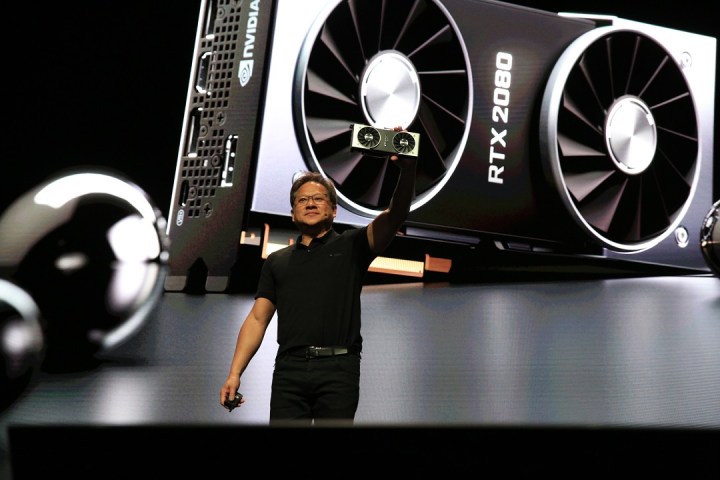
Let me set the stage. It’s August 2018, and Nvidia is taking the stage to show off its next generation of graphics cards that carry a fancy new badge: RTX. It had just come off of the Pascal generation of GPUs, which persist in some PCs even to this day, and with crypto mining dying off at the time, the way was clear for a new generation of Nvidia GPUs to shock the world.
And shock they did, but not quite in the way Nvidia intended. This new generation, which carried with it some significant price increases compared to the GTX days, was built around a cutting-edge feature in the world of real-time graphics: ray tracing. The problem was that none of the cards could do ray tracing particularly well, and there just weren’t enough games to support it.
On top of that, Nvidia’s Deep Learning Super Sampling (DLSS), an AI-powered upscaler that promised to boost performance in games with ray tracing, showed nasty visual artifacts. High pricing combined with half-baked features led to backlash, as well as a string of “it just works” memes. Less than a year after releasing, Nvidia refreshed its lineup with Super GPUs and released GTX 16-series GPUs to accommodate gamers on a stricter budget.
Don’t Miss:
Nvidia’s visions of grandeur looked silly at the time, with expensive hardware supposedly developed for next-gen tech like ray tracing and DLSS not truly offering those capabilities. Five years on, it’s clear Nvidia had a vision, though, and we finally saw it pay off this year.
From niche to mainstream
Let’s start with DLSS because it’s arguably the more important development than ray tracing. DLSS 1.0 was, frankly, terrible. It required training on a per-game basis, meaning there was limited support, and it was only trained on a small data set. That led to common situations where it would appear that games were running at a lower resolution, as well as showing significant visual artifacts.
Nvidia clearly knew DLSS 1.0 wasn’t good enough. In less than a year, Nvidia introduced DLSS 2.0. It ditched per-game training for a generalized model, leading to much better image quality, and it was far more efficient than the original implementation of DLSS, leading to higher performance boosts. It was still a niche feature, but as any PC gamer can tell you today, that’s not the case anymore.
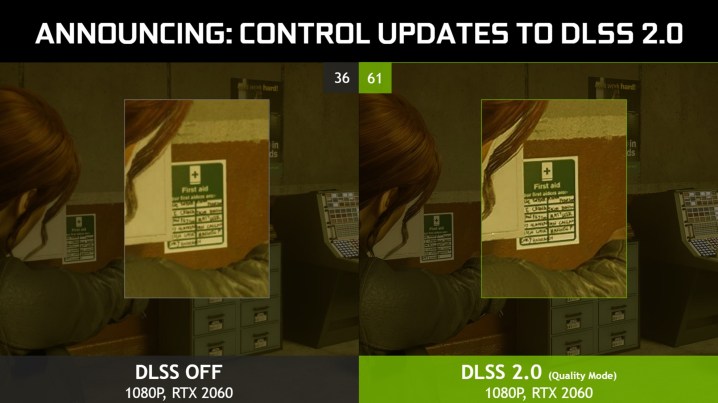
DLSS has become perhaps even bigger than the RTX branding Nvidia led with in 2018. There’s a solid argument that Nvidia’s graphics cards are such hot commodities today not because of raw horsepower alone, but because of DLSS. You’ll find it in basically all major PC releases now, and in games like Starfield that don’t ship with DLSS, there’s massive pushback from the PC gaming community.
Even without a performance boost, Nvidia’s Deep Learning Anti-Aliasing (DLAA) offers better anti-aliasing than traditional implementations. That’s why you see games like Alan Wake 2 that don’t use traditional anti-aliasing solutions instead rely on DLSS. And that’s why you hear that DLSS can look better than native resolution because, with its anti-aliasing, it truly can.
That’s just with DLSS 2.0, too. Nvidia has continued to refine and improve DLSS. On current-gen GPUs, it can not only offer better anti-aliasing and a massive performance boost through upscaling, it can also generate frames and leverage an AI denoiser for more accurate ray-traced effects. DLSS isn’t just a fringe feature for a few games like it was in 2018. True to Nvidia’s vision at the time, it’s an essential feature that can influence a buying decision.
It (finally) just works
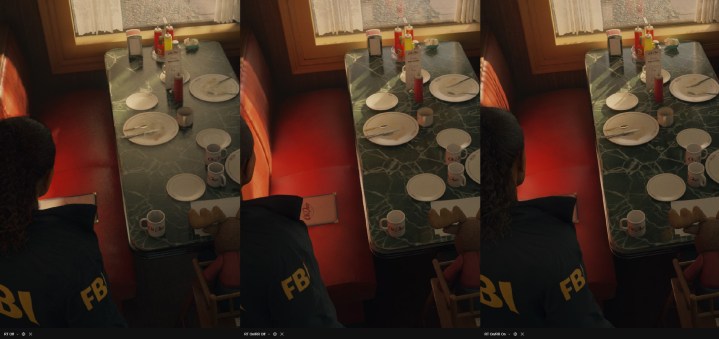
But back in 2018, Nvidia didn’t lead with DLSS. It was an extra feature, likely a way to get ray tracing working on hardware that wasn’t quite able to handle it. With the launch of RTX 20-series graphics cards, it was all about tracing rays for more realistic lighting and shadows.
Nvidia’s idea was to bounce light rays around a scene in real time to achieve this effect, which had been a staple in offline rendering — think an animated movie — for years. It just didn’t work well at the time. Actually tracing all of those rays in real time wasn’t possible on the hardware available at the time (there’s an argument it’s not possible on the hardware today), so there were compromises. You cut back the number of rays, reduce the number of effects using ray tracing, and lower the resolution of the effects so that you can achieve playable frame rates. And at that point, you might as well not have ray tracing in your game at all.
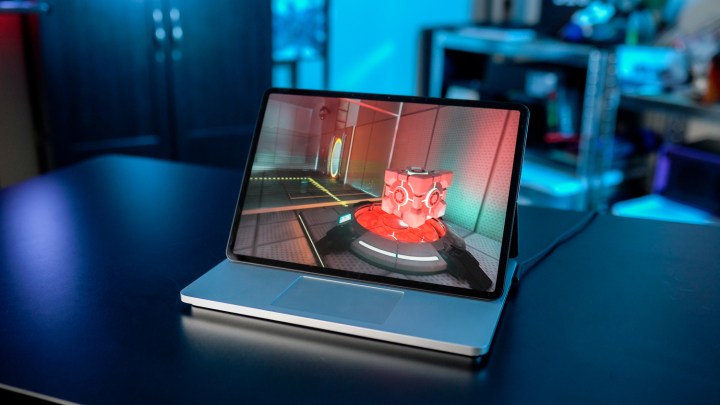
That was the problem Nvidia encountered with the launch of RTX 20-series GPU. The revolution of ray tracing wasn’t fully formed, leading most PC gamers to write it off entirely. In the few games that came with real-time ray tracing, the effect was too demanding to justify a small visual payoff. Today, that’s not the case.
The following generation of Nvidia GPUs were better at ray tracing, and game developers found out new ways to efficiently leverage the technique (due in no small part to the Xbox Series X and PlayStation 5 touting ray tracing as a feature). But it was this year where Nvidia’s promise of a ray-traced future really came into focus.
Similar to DLSS, you’d have a hard time finding a AAA game that released this year without ray tracing support. Most of them run at playable frame rates now, too, with games like Resident Evil 4 offering less demanding forms of ray tracing. The big boost this year, however, was path tracing. Nvidia calls it “full ray tracing,” but it’s essentially that plan Nvidia spelled out in 2018. You apply ray tracing everywhere.
We’ve already seen the power of path tracing in games like Alan Wake 2, Cyberpunk 2077, and Portal RTX, all of which offer some of the most realistic visuals you can find in gaming right now. Path tracing is only bolstered by DLSS 3.5, not only offering playable frame rates in these games, but also enhancing the quality of the ray tracing through an AI-powered denoiser.
Five years in the making
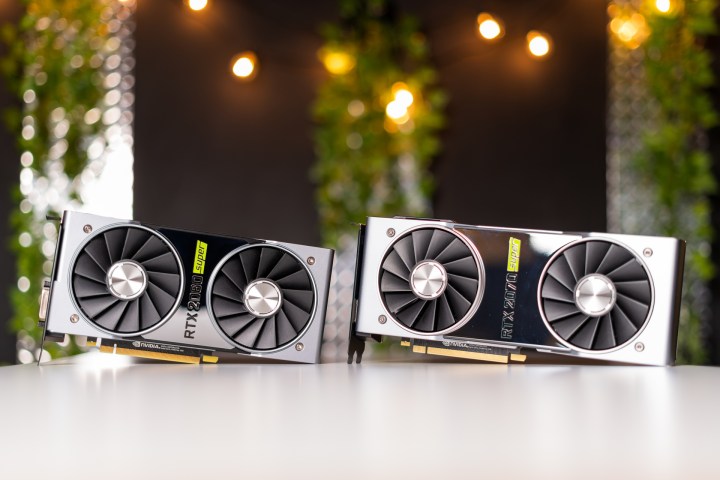
In 2018, when Nvidia introduced the RTX platform, it seemed like a lot of hoopla with no practical value (and a significant increase to GPU prices). This year, however, Nvidia’s platform is fully formed. Ray tracing is now common in games and available at playable frame rates, and DLSS delivers not only a massive increase in performance, but also higher-quality visuals. It took five years to get to this point, but in hindsight, it’s clear Nvidia was on to something when it laid out RTX in 2018.
The question is where we go from here. We have AI-generated frames, special ray tracing denoisers, world-class anti-aliasing, and full-on path tracing in games. Nvidia’s RTX future is formed, assuming you have one of the latest graphics cards. Maybe in 2024 we’ll get a taste of what we didn’t know we were missing.
Editors’ Recommendations




